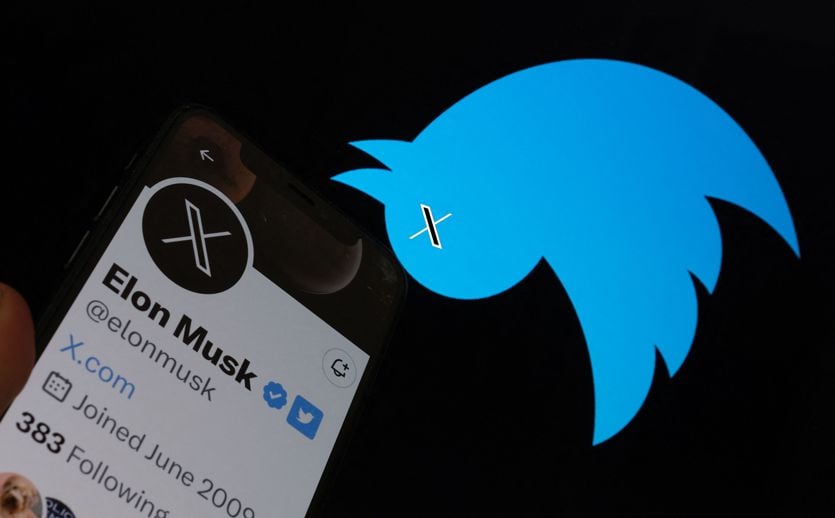From the RealityPro headset to the MacBook Air 15: all the latest rumors about Apple's news at WWDC

The World Conference of Apple Developers (WWDC) opens in Cupertino on Monday: it is an appointment that has been repeated for 40 years, but which more than ever marks a turning point for Tim Cook's company.
From June 5, Apple's WWDC: the augmented reality headset arrives
by Bruno Ruffilli
Because it is important
Traditionally, the Worldwide Developers Conference is an appointment for developers, i.e. those who produce software, applications and services for the various Apple product platforms, but in recent editions there have also been numerous announcements regarding hardware. This year, Apple is expected to present a major update for iPhone users with iOS 17 and a redesigned interface for Apple Watch with watchOS 10. There will also be news for macOS and iPadOS, and there will almost certainly be new computers. But, if the advances of the last few months are reliable, everyone's attention should be captured by the announcement of the Reality Pro viewer with AR and VR functions, and the related xrOS software platform.
When and where
WWDC 2023 will kick off on Monday 5 June with a keynote at 7 pm Italian time (10 am in California). The keynote, which is the only part specifically intended for the general public, should be, like the last few times, a pre-recorded video with special effects and film production, with Tim Cook and a good number of Apple executives and engineers.
After the limitations of the pandemic, developers and members of the press are expected to be in person at WWDC this year. Developers will have the opportunity to attend Monday's keynote, take a tour of Apple Park and participate in special sessions focused on the latest announcements. Also on June 5, the winners of the Apple Design Awards will be announced. Following the keynote, the Platforms State of the Union is expected, which will offer more in-depth details on Apple's announcements. There will also be special "must-see" evening activities for those in attendance.
It will be possible to follow WWDC live through various channels. The keynote will be available through the Apple website, the Apple Developer app, the Apple TV app and YouTube. The Platforms State of the Union can be followed via the Apple Developer app and website at 10:30pm Monday, the Apple Design Awards June 6 at 3:30am. Italian Tech will follow the keynote live from Cupertino with constant updates and insights in the following days.
Economy
The Apple App Store is a $1.1 trillion dollar business
by Antonio Dini

iOS 17
Many new features are planned for iOS 17, the iPhone operating system, including new features, changes, bug fixes and more.
- New journaling app, which will integrate with Where's: a sort of "intelligent" diary that takes advantage of various location-based functions.
- "Smart display" mode for the iPhone 14 Pro, with a horizontal interface for the always active Lock Screen that will show useful information such as calendar appointments, weather forecasts and notifications.
- New features in the Health app, including mood and emotion tracking, which will allow users to record their mood, answer specific questions about each day, and track results over time. In addition, the Health app will gain new vision features, such as the ability to store prescription information for contact lenses and glasses.
- "Significant" updates to the Wallet app, though no further details are available at this time.
- Improvements to SharePlay and expansion of AirPlay to other places, including hotels.
- Ability to sideload and use third-party app stores as a response to European Union requests. This will allow iPhone users to install apps from sources other than the Apple App Store. It could be a function limited to the EU alone, but from a conceptual point of view it is perhaps the most important novelty of iOS 17, because it is the first time that Apple has opened up to third-party stores.
App Store, NFC, iMessage: this is how the next iPhone could change as a result of the new European rules
by Bruno Ruffilli

watchOS 10
According to Bloomberg, watchOS 10 it will be a "rather large update" focused on "significant changes to the user interface". watchOS 10 will focus on widgets: the new design could recall a mode already seen on the iPhone and iPad, which allows users to layer multiple widgets on top of each other and swipe between them. Among those ready at launch, activity tracking, weather, stocks, calendar and various others. The new interface could also bring changes to the features of the Digital Crown: by pressing it, you would not get to the Apple Watch main screen but the widget list would be activated. In addition, watchOS 10 should have many of the new features of iOS 17, for example, those for tracking mood and emotions in Health and the Journaling app.
iPadOS 17, macOS 14, tvOS, HomePod
Apple will also announce iPadOS 17 at WWDC. At the moment, rumors about what to expect are pretty scarce. According to Bloomberg, iPadOS 17 will finally include the Health app: it would be the first time that Apple has made it available on a device other than the iPhone.
Other features seem plausible for iPadOS 17. Apple could also bring the lock screen customization options, first seen on the iPhone with iOS 16, to its tablet. The Journaling app from iOS 17 could debut on the iPad. And here too, at least for those residing in the EU, the opening to third-party apps with sideloading could arrive.
Few indiscretions also for macOS 14, which should include some of the new features of iOS 17, such as the Journaling app and Find My. No anticipation, however, for tvOS 17the software for Apple TV, nor for that of HomePods And HomePod mini.
Tech Test
The proof: HomePod second generation, the smart speaker according to Apple
by Bruno Ruffilli

Hardware
Among the few certainties that WWDC offers is that there will be no iPhone or Apple Watch. However, a Mac never seen before could debut, namely the MacBook Air in the 15-inch version. Currently, the MacBook Air is only available with a 13.6-inch screen. According to Bloomberg, the 15-inch one will have identical resolution to the 14-inch MacBook Pro, while performance should be the same as the 13-inch Air, since the M2 processor is expected to remain unchanged.
Among the most recent previews, several point to a new Mac Studio with M2 Max and M2 Ultra processors. Apple is testing two computers called "Mac 14.13" and "Mac 14.14", which are believed to be new versions of the Mac Studio. M2 Max has 12-core CPU and 30-core GPU and up to 96GB RAM, M2 Ultra will double all specs, going up to 60-core CPU and up to 192GB RAM. It would be the first time Apple has brought the M2 Ultra chip to a device other than the MacBook Pro.

Reality Pro and xrOS
According to rumors, Apple has been working on a completely new device for at least seven years. It would be an augmented reality viewer, a technology that Tim Cook has often shown to appreciate. Postponed several times, it would finally arrive at WWDC 2023, and would mark Cupertino's entry into a hitherto very small market, dominated by Meta, thanks to the acquisition of Oculus in 2014 and Mark Zuckerberg's push on the metaverse. Which was powerful enough to push him to change the name and focus of his company, but so far it hasn't borne fruit.
Quest 3, Meta unveils the third generation of its virtual and augmented reality headset
by Tiziano Toniutti

The viewer should have a thin and light design that will make it more comfortable than its competitors, thanks also to the external battery to be worn on the hips, connected via a USB-C cable. The autonomy will be about two hours, but the batteries can be replaced to use it longer. The headset will support both virtual reality and augmented reality, with a Digital Crown-like button to switch between modes.
Rumors point to a design similar to a ski mask, with materials such as aluminum, glass and carbon fiber, and an elastic band similar to an Apple Watch band (although the renderings often show some similarities with the Airpods headphones Max). Two 4K microOLED displays from Sony will offer a 120-degree field of view; record brightness, 5,000 nits with HDR, and the resolution of 4,000 pixels per inch. It will be possible to use corrective lenses, and the internal lenses can be adjusted to adapt to the user's interpupillary distance.
Outside, a dozen cameras will monitor hand and leg movements and facial expressions. Apple plans to use the cameras to track hand and eye gestures: therefore, the controllers adopted by other competitors will be missing, and it will be possible, for example, to look at an object on the screen to select it, using hand gestures to interact. There will be an "air typing" feature for text entry. The cameras will also map their surroundings for augmented reality applications, also making use of LiDAR scanners; iris scanning may also be used for authentication.
The viewer, which should be called Reality Pro, will be able to connect to a Mac to display the screen, but is designed to work independently thanks to the two integrated M2 processors. Wi-Fi and 5G connectivity will not be missing.
Towards the metaverse
What changes between virtual reality, augmented reality and mixed reality
by Emanuele Capone

The operating system will probably be called xrOS, where "xr" stands for "extended reality"; it will be based on iOS, so adapting existing applications shouldn't be a particularly complex operation. Apple is developing dedicated apps for the device, and Safari, Photos, Messages, Maps, Apple Music and other programs will be optimized for 3D, and it will also be possible to run iPad apps in 2D. FaceTime will support one-on-one chats with realistic avatars featuring the user's face and body, while group chats will use Memoji.
There should be a dedicated Fitness+ app for exercise, and the Health features will guide users through meditation exercises. Apple is already working with game developers to help them update their existing content for mixed reality, and Apple TV won't be missing of course.
I/O 2023
We tried Starline, the Google project that will kill Teams
by our correspondent Emanuele Capone

To look far
Monday's product will not be ready for the general public: neither for the design, nor for the supported apps, nor for the price (around $3,000, it is said). And in fact, the RealityPro viewer should only be available in October, and sales forecasts are very conservative: less than a million units by the end of the year (by way of comparison, Apple sold over 225 million iPhones in 2022). In short, even if everyone will talk about it, it will be little more than a test for Cupertino. But presenting the AR/VR viewer at the world developer conference makes a lot of sense, because it is precisely on the developers that Cupertino is betting to find the killer application that this type of device has so far lacked. On the other hand, the first iPhone didn't have the App Store, the first iPad was heavy and awkward, the first Apple Watch was thought of as a luxury gadget; over time, even Apple TV, AirPods, HomePods have changed in price, intended use, interface and much more. According to reports, Apple is already working on at least two successive generations of the viewer, but a version really intended for the general public could only arrive in 4 or 5 years.
The analysis
Successes and challenges: what Apple's first 10 years under Tim Cook were like and what they will look like next
by Bruno Ruffilli












